While maitake and shiitake mushrooms are both highly prized edible mushrooms, they are not closely related and don’t share similar features. Both species are frequently used in gourmet cooking and are sought after for their depth of flavor and meaty texture. They are both commercially cultivated, albeit shiitake in far greater numbers and if you live in moist, temperate regions of Japan or China, you can forage for either species. Some people have even found both in the Appalachians, but it’s most likely that the shiitakes just happened to escape from a cultivator and into the wild.
In regards to classification, morphology, ecology, their native distribution, and how they are cultivated, however, they are quite distinct from each other.
In this guide, we’ll discuss seven key differences between maitake and shiitake mushrooms.
Read on to learn more.
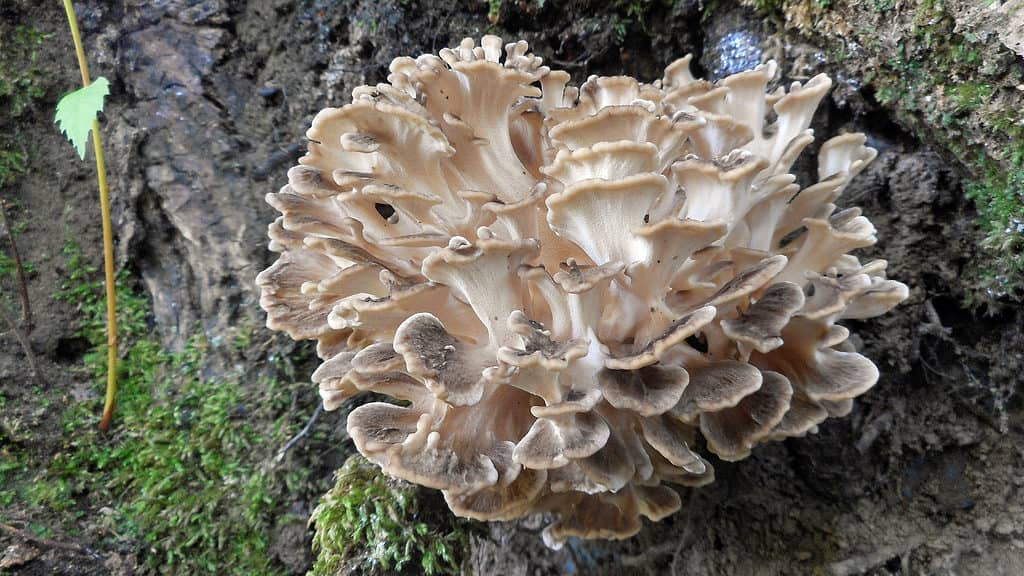
, aka maitake, will almost always be found at the base of oak trees in the U.S.
©Lorenzo Martinelli/Shutterstock.com
Maitake and Shiitake Key Differences: Classification
The scientific name for maitake is Grifola frondosa. This species belongs to the Meripilaceae family of polypore mushrooms in the Polyporales order. The Latin word “frondosa” means “leafy” or “full of leaves”- a reference to the morphology of this edible mushroom. In Japanese, the word maitake means “dancing mushroom”- a reference to stories of foragers dancing with delight upon finding this prized species.
Shiitake’s scientific name is Lentinula edodes. It belongs to the Omphalotaceae family of gilled mushrooms in the Agaricales order. The Japanese common name for this species comes from its affinity for growing on the decomposing wood of the shii tree (Castanopsis cuspidata), a Japanese and South Korean hardwood species. The “take” part of the name is the Japanese word for mushroom.
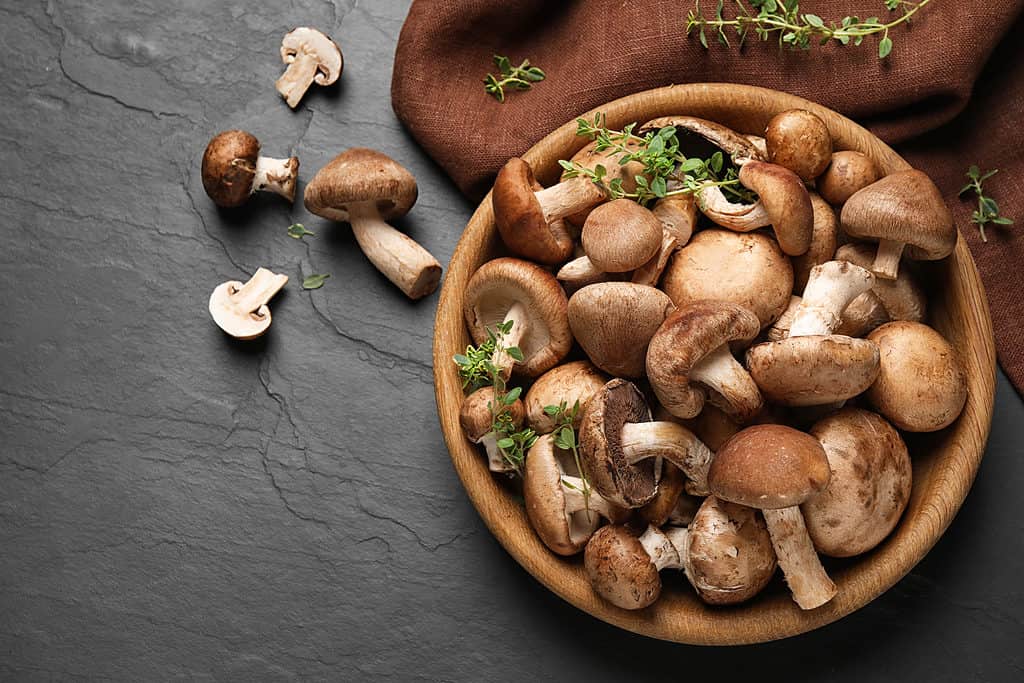
, aka shiitake, have been popular in Asia for a long time and are gaining popularity in the Western world.
©New Africa/Shutterstock.com
Maitake and Shiitake Key Differences: Morphology
Close observation is not necessary to discern between maitake and shiitake mushrooms. Upon immediate inspection, you will find that a number of key morphological differences exist between these species of mushrooms.
Size
Maitake can grow impressively large. An abundance of brown-gray fronds grow from Grifola frondosa‘s thick central stalk in a rosette-like pattern, and a single mature fruiting body often contains dozens of fronds. Individual fronds may reach about 6 inches across. While Grifola frondosa can frequently reach 24 inches across and weigh upwards of 20 pounds, some foragers have reported finding specimens reaching up to 60 inches in diameter and weighing over 50 pounds. You aren’t likely to find cultivated maitake near as large as specimens from the wild.
In comparison, the shiitake fruiting body is composed of one cap centered over the stem (stipe). A cap typically measures 2-5 inches across. The Lentinula edodes mycelium tends to produce flushes of individual fruiting bodies in dense clusters or scattered across hardwood substrate. Normally, the cultivated ones are about the same size as the ones you find in the wild.
Pores vs. Gills
As a polypore mushroom, maitake produces vertical tubelike spore-bearing tissues under the caps, called pores. On Grifola frondosa, the pores are lavender-gray to white, but they stain yellow with age. These pores are large, tooth-like, and run at an angle down the stipe, sometimes almost to the base. This species features 1-3 pores per millimeter, and the pore tubs are 1-3 millimeters deep. The spore print is white.

This isn’t maitake, but you can see how mushroom pores look much different than gills.
©Christina Dutkowski/Shutterstock.com
In contrast with maitake, shiitake mushrooms feature gills as their spore-producing tissues. The gills are whitish to cream-colored. The gills of an immature Lentinula edodes fruiting body are covered by a partial veil. The partial veil is a protective, thin, membranous tissue. The spore print is also white.

Shiitake has gills that look a lot different than the pores of maitake.
©Audreycmk/Shutterstock.com
Maitake and Shiitake Key Differences: Cap Morphology
The “caps” of maitake and shiitake mushrooms are vastly different. On Grifola frondosa, the caps are more of a frond and are typically fan or spoon-shaped. They sometimes feature subtle concentric zones of gray, brown, yellow-brown, and cream. These “caps” tend to yellow with age, are smooth or finely velvety, and may appear softly wavy along the margins. All the caps attach to the multi-branched central stipe.
On shiitake mushrooms, young specimens feature an umbrella-shaped, chestnut brown cap with in-rolled margins. White shaggy markings are common on the caps, often appearing as rings around the margin and outer structure. As the mushroom matures, the cap expands into a disc-like shape. Cracking across the cap is common as the mushroom expands and can be a desired feature in cultivation.
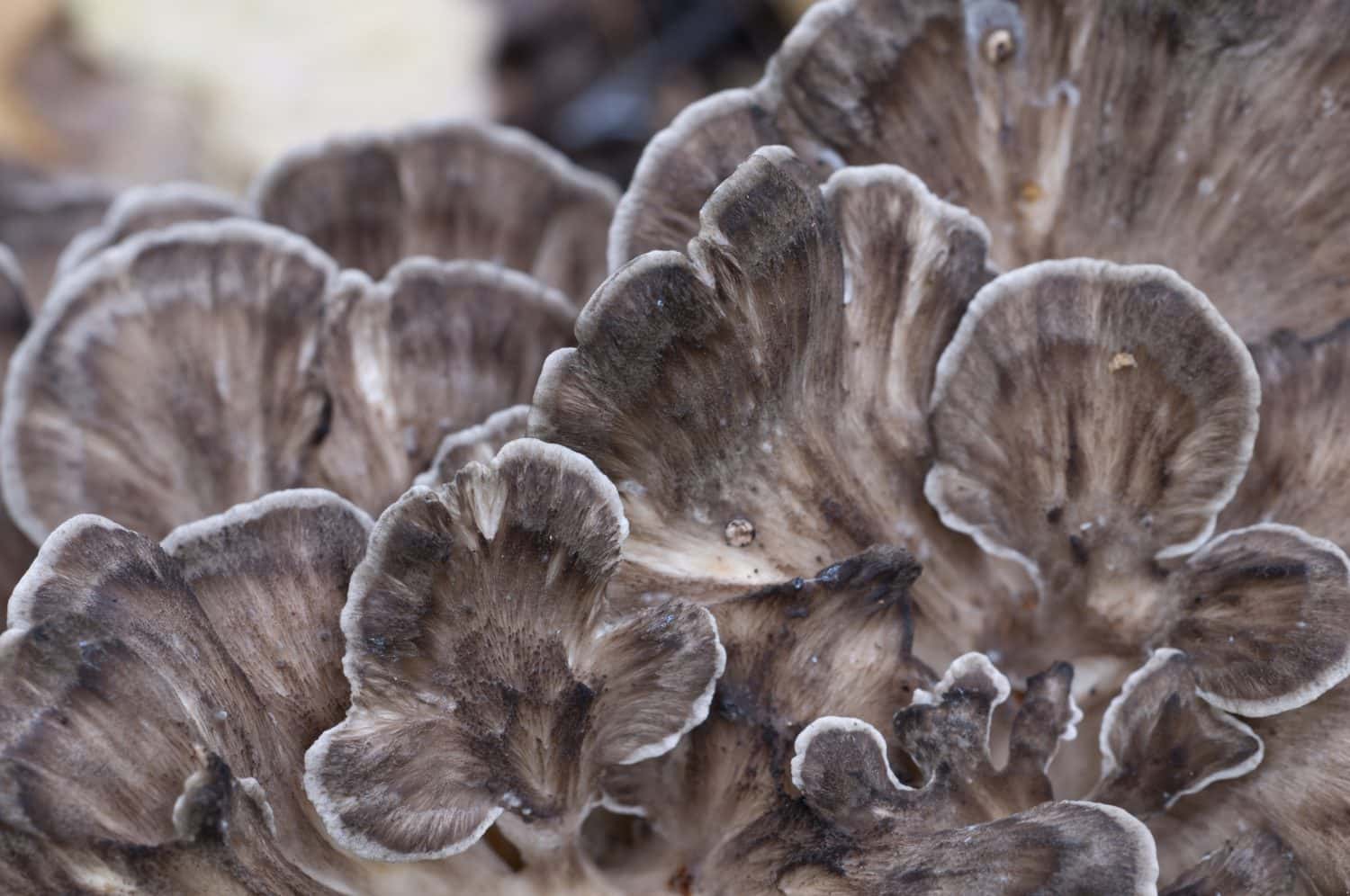
You can see in this close-up why the “caps” of mistake are commonly called fronds.
©Alexander62/Shutterstock.com
Maitake and Shiitake Key Differences: Ecology
Both maitake and shiitake are saprobic, meaning they derive their nutrients from decaying organic matter. However, where they grow on decaying matter differs between these species.
Maitake
Maitake predominantly consists of fruits on oaks and other hardwood trees. In addition to being saprobic, Grifola frondosa is also weakly parasitic, capable of fruiting on living trees. It’s quite common to find maitake growing at the base of a living host, where it will reappear yearly in the late summer and fall. In North America, maitake occurs widely east of the Rocky Mountains, but there are reports of a couple of rare observations in the Pacific Northwest. This species also commonly occurs across temperate, hardwood forests of mainland Europe and regions of East Asia.
Grifola frondosa causes a white butt rot at the base of its host tree. Since it is only weakly parasitic, maitake does not quickly kill its host and instead spends years maximizing nutrient gain from the tree. Once it dies, this flexible fungus can continue to acquire nutrients through targeting cellulose, hemicellulose, and lignin.

, aka mistake, growing from the base of a tree stump.
©Brandt Bolding/Shutterstock.com
Shiitake
While maitake can exhibit both saprobic and parasitic behaviors, the shiitake mushroom is exclusively saprobic. This species most commonly fruits on the deadwood of hardwood trees, especially shii, chestnut, oak, maple, beech, poplar, and mulberry.
Lentinula edodes is also a white-rot fungus, degrading lignin, cellulose, and hemicellulose from within the hardwood. By decomposing this matter, white-rot fungi like shiitake and maitake contribute to vital nutrient cycling and carbon sequestration.
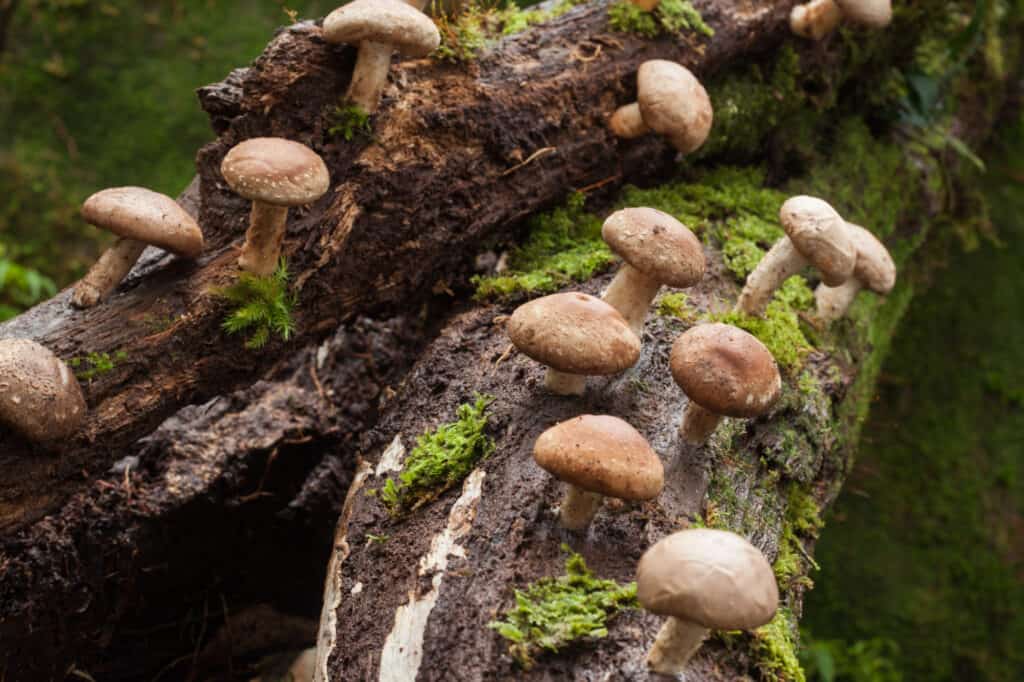
Shiitake grows on the sides of downed logs and not at the base of living trees.
©puttography/Shutterstock.com
Maitake and Shiitake Key Differences: Cultivation
While shiitake mushrooms are the second most commercially cultivated species in the world, maitake cultivation is far less abundant. This is in part due to the increased time and difficulty in cultivating Grifola frondosa versus Lentinula edodes.
Growing maitake indoors can be a bit tricky, and outdoor production can take 2-3 years of mycelium growth before fruiting occurs. Wild Grifola frondosa spores are notoriously difficult to spawn indoors, so cultivators typically use strains bred specifically for the challenges of indoor maitake cultivation. This species is generally not considered a beginner-friendly mushroom for indoor cultivation. Beginner outdoor growers will likely be much more successful but will need plenty of patience.
In contrast, shiitake mushrooms are widely cultivated by beginners and professionals alike. Indoor cultivation for this species typically requires sterilization of sawdust grown in sealed bags, but they readily fruit outdoors on logs in as little as 6 months. Most gourmet mushroom-growing companies offer shiitake indoor grow kits, plugs, spawn, and a multitude of strains for cold or warm-weather fruiting.
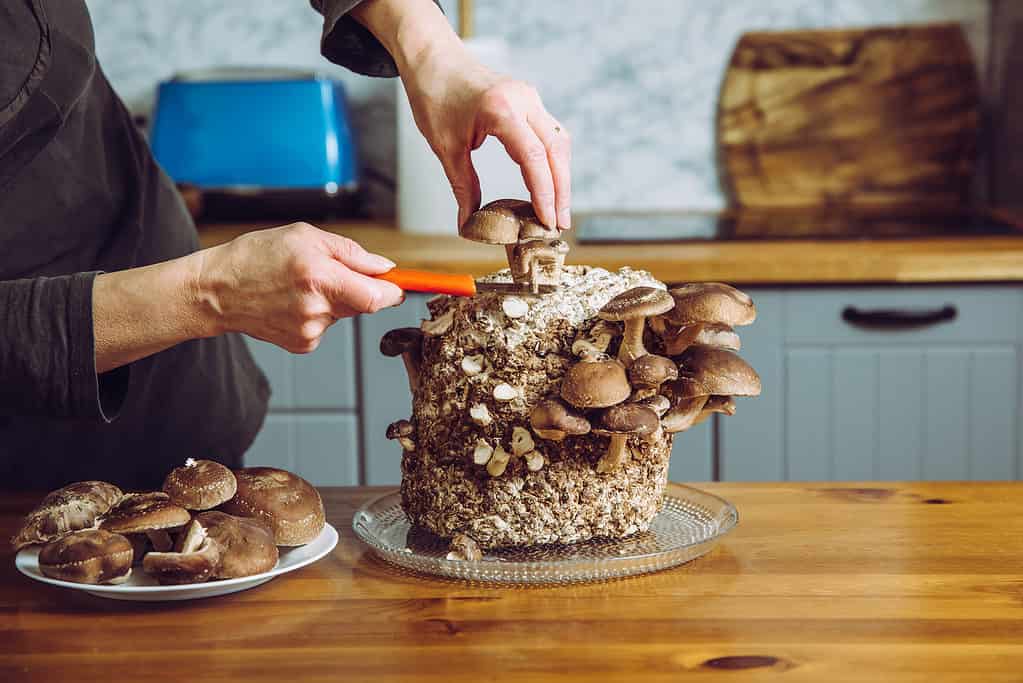
Shiitake mushrooms,
Lentinula edodes, growing in home kitchen from a grow block made of sawdust.
©FotoHelin/Shutterstock.com
Maitake and Shiitake Key Differences: Flavor and Availability
Both maitake and shiitake mushrooms are considered delicious, highly prized edible mushrooms. Maitake mushrooms are certainly more of a delicacy in that they are less commonly available, but both feature amazing flavor profiles and textures.
Shiitake
Both fresh and dried shiitakes feature a deep umami taste and chewy, meaty texture. Dried shiitake has an even deeper umami flavor due to the increased glutamate and guanylate production during the drying process.
The popularity of these mushrooms in North America has been steadily increasing in the last decade, with many large, common grocery store chains often stocking fresh and dried shiitakes. You can also find them sold at farmer’s markets, health food stores, and gourmet restaurants. In North America, you can find fresh shiitake for about $10-12 per pound and sometimes even cheaper at Asian grocery stores.
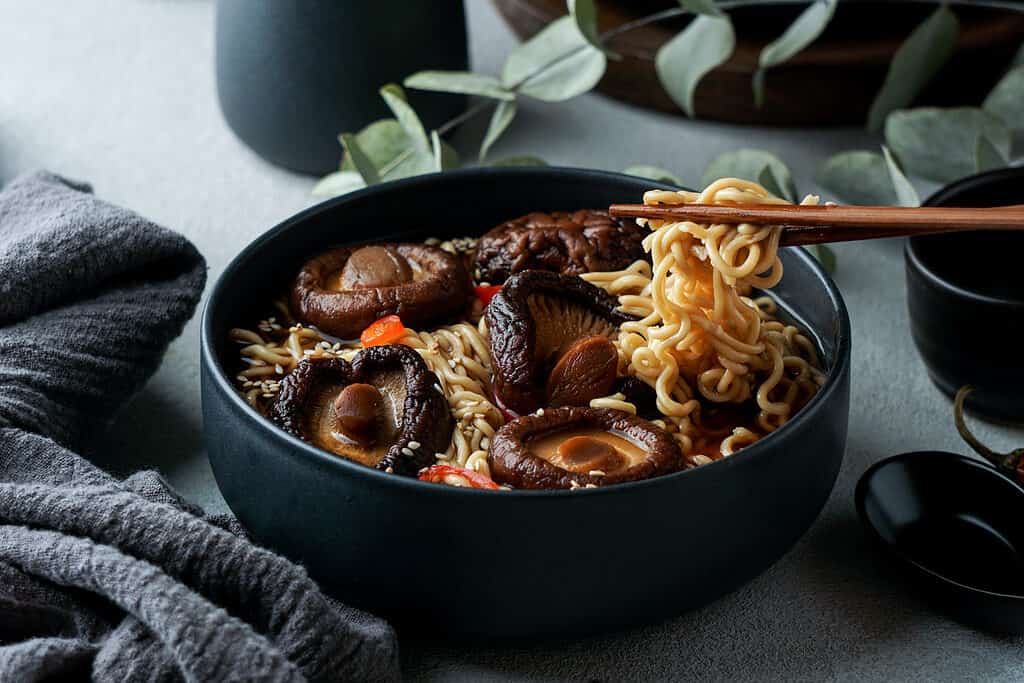
Shiitake mushrooms cooked in a noodle dish.
©Julia-Bogdanova/Shutterstock.com
Maitake
Maitake mushrooms have a deeply earthy, slightly spicy, savory, and nutty flavor. It’s best to harvest and prepare them when the fruiting body is still young and fresh. Mature specimens are often too tough and fibrous to enjoy. The earthy aroma and rich flavors are intensified when the mushroom is cooked until golden brown.
You can find wild-foraged, and sometimes cultivated, maitake at farmer’s markets, health food stores, and gourmet restaurants. In North America, the average cost of fresh maitake is about $18-22 per pound.
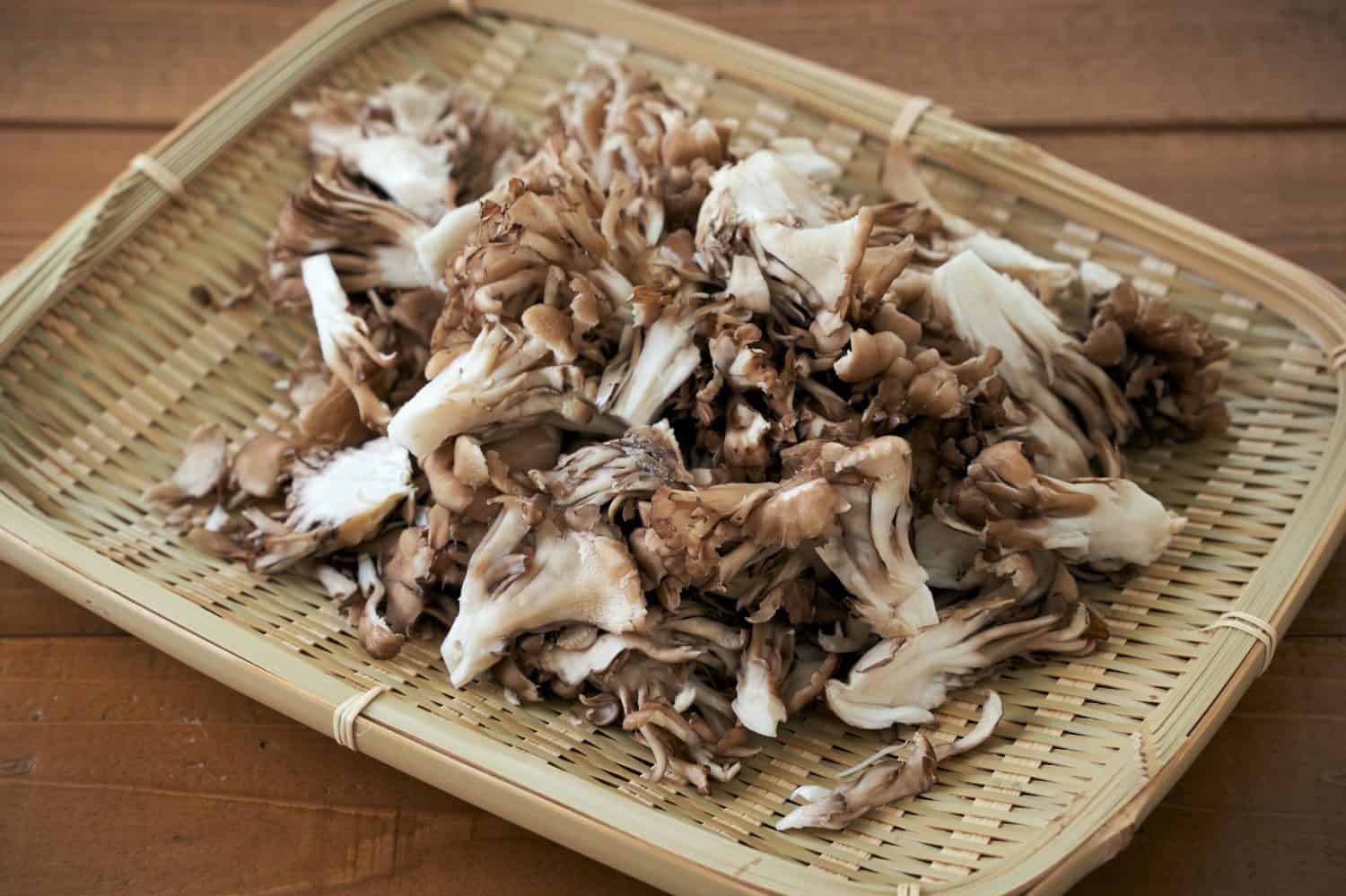
Cultivated Hen of the woods, aka maitake, might not have as much flavor as the wild ones, but it is a whole lot easier to clean.
©karins/Shutterstock.com
The photo featured at the top of this post is © Lorenzo Martinelli/Shutterstock.com
The information presented on or through the Website is made available solely for general informational purposes. We do not warrant the accuracy, completeness, or usefulness of this information. Any reliance you place on such information is strictly at your own risk. We disclaim all liability and responsibility arising from any reliance placed on such materials by you or any other visitor to the Website, or by anyone who may be informed of any of its contents. None of the statements or claims on the Website should be taken as medical advice, health advice, or as confirmation that a plant, fungus, or other item is safe for consumption or will provide any health benefits. Anyone considering the health benefits of particular plant, fungus, or other item should first consult with a doctor or other medical professional. The statements made within this Website have not been evaluated by the Food and Drug Administration. These statements are not intended to diagnose, treat, cure or prevent any disease.
Thank you for reading! Have some feedback for us? Contact the AZ Animals editorial team.







